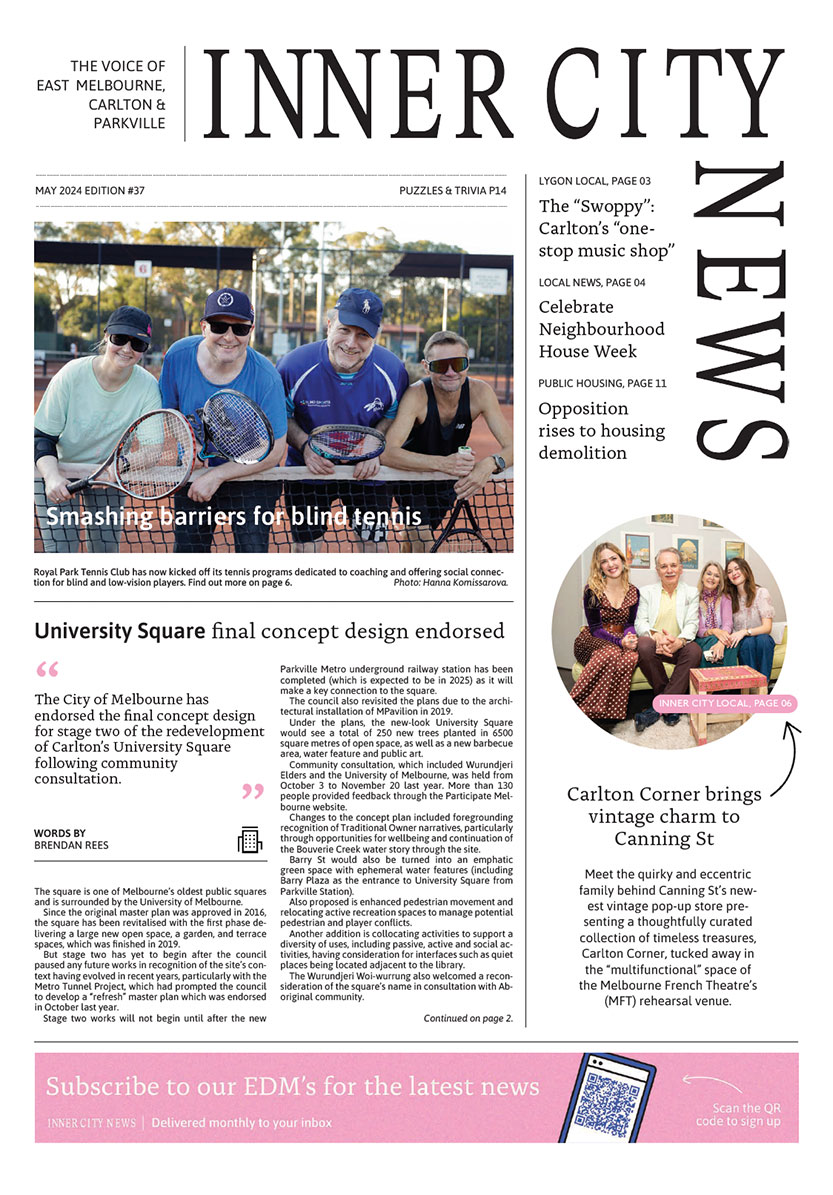East Melbourne’s voice: The East Melbourne Group
A striking feature of East Melbourne is the frequency and enthusiasm with which conversations spring up with walkers-by in the street.
We are not a suburb of big front yards, high fences and vehicular comings and goings. We walk, we smile and wave. We bump into people and we talk. Communication within a community can be a challenge, but the East Melbourne Group (EMG) keeps up the conversation.
Traditionally, Australian society’s cohesion is aided by a range of communication touch points, such as at the school gate, the sporting or social club, the local pub, market or high street shops; but East Melbourne has none of these. COVID further dampened opportunities for East Melbourne and Jolimont residents to share conversations as access to the library, churches and cafes were locked down.
For decades the East Melbourne Group has attempted to provide a communication conduit for residents. We maintain a monthly members’ update, Facebook page and a quarterly magazine, in an effort to keep our community informed and connected.
The 3002 East Melbourne and Jolimont Magazine has been in circulation since 1980 with past editions held at the State Library archives. Editors keep residents updated on the EMG’s efforts with heritage and planning developments, amenity initiatives, social anecdotes and relevant feature articles. For more than 40 years local volunteer writers and photographers have delighted readers, with 4500 copies of each edition circulated locally.
Our latest edition, Autumn 2021, included a fascinating feature by local resident, Rupert Myer, discussing Our community’s shared cultural inheritance. The piece took an insightful look into East Melbourne’s cultural evolution, reflecting on its architectural history and notable residents. Our sub-editor Harrison Colwell investigated the Divine suburb of East Melbourne, bringing together local religious leaders for conversations on the role of faith in modern day secular society.
His article shone light on the anomaly that our geographically small suburb is home to 10 active places of worship, representing eight faiths and the archdiocese of both the Catholic church at St Patricks Cathedral and Anglican church at Bishopscourt.
A key role of EMG is to also be the communication device linking our residents and small business owners with the council, utility providers and other stakeholders. Our president and sub-committee convenors meet regularly with the Lord Mayor and relevant councillors to discuss their portfolios in tackling community concerns. We also represent objecting residents at VCAT hearings and with advice.
The City of Melbourne is committed to community participation and the group acts as the mouthpiece for members and the broader community. In order to ensure that we remain in-step with the whole suburb’s priorities, we are eager to engage all stakeholders in the conversation. We invite all residents to contact us with issues we can investigate at a local, state or even federal level. We also pursue matters with VicRoads, Yarra Trams, NBN, DHHS, etc. following the conversations through to implementation.
Our monthly member update keeps members informed on the progress of our endeavours. It is also the platform for locals to share information of upcoming community events, support participation in the arts, and bring people together with news which affects them.
Past editions of the magazine can be viewed at emg.org.au/emg-magazine. To volunteer, submit content or advertise in the quarterly magazine, or to communicate with members via our update, please email [email protected] •
For more information, visit: emg.org.au/why-join-emg/

Treasured First Nations artwork presented to the University of Melbourne





 Download the Latest Edition
Download the Latest Edition